 This article on the Dobermann breed is part of a series to highlight the Big Picture of health, welfare and breeding and to help develop Globally Relevant Integrated Health Profiles (GRIHPs) for many breeds. See IPFD's Get a GRIHP! on Breed Health Initiative
This article on the Dobermann breed is part of a series to highlight the Big Picture of health, welfare and breeding and to help develop Globally Relevant Integrated Health Profiles (GRIHPs) for many breeds. See IPFD's Get a GRIHP! on Breed Health Initiative
There are many others doing great work to advance health, well-being, and welfare in this wonderful breed. We reference and link to terrific work, developments, reports, and research from the UK, USA, Sweden, Finland, and more below. Thanks to all of those working on behalf of Dobermanns!
This is a 'living document' - so if anyone has more material to share or point us to - please let us know!
Table of Contents
Breed at a glance

The Dobermann (a.k.a. Doberman Pinscher) was created in the 19th century in Germany to protect and serve. It was developed from several breeds by Louis Dobermann, whose main goal was distinguishing the character of the dogs. He wanted Dobermanns to be hard, fearless, intelligent, alert, tenaciously loyal companions and to serve as personal protectors and guard dogs. No stud books were held at the time of Louis Dobermann. First markings of Dobermanns in stud books are from 1890’s. All modern Dobermanns around the world descend from two male siblings, Greif and Graf Belling von Grönland.
Dobermanns are used by police and serve as guards; today's dogs make very nice companions for all kinds of work and dog sport hobbies.
 Key Health Conditions
Key Health Conditions
-
heart conditions, especially dilated cardiomyopathy (DCM)
-
tumours
-
orthopedics: spondylosis, cruciate ligament rupture, lumbosacral transitional vertebrae (LTV), wobbler syndrome (neck vertebrae instability)
-
eye condition: persistent hyperplastic tunica vasculosa lentis/persistent hyperplastic primary vitreous (PHTVL/PHPV)
-
renal dysplasia
-
gastric dilatation volvulus, also known as bloat
-
von Willebrand bleeding disease
-
allergies and atopies
-
narcolepsy
-
obsessive-compulsive disorder (OCD)
-
Dobermann hepatitis
What do caretakers need to know
-
Dobermanns are intelligent, motivated working dogs, so they need time, activities, and training.
-
Dobermann tails are still docked and ears are cropped in several countries, even though modern animal welfare laws have put an end to this practice in several European countries. For example, in Scandinavian countries, cropped and docked dogs are not allowed in shows or competitions.
-
Heart conditions are heritable - "Due to the prevalence of heart disease in the breed, the Doberman Pinscher Club of America recommends that dogs receive an echocardiogram screening when they are between 1 and 2 years of age, along with a baseline Holter monitor test. Dogs in breeding programs should be tested every six months. These tests help to identity the disease sooner when treatment can help slow its progression, ease clinical signs and improve quality of life."1
-
Be aware: Dogs with dilated cardiomyopathy in the symptomatic stage often experience coughing, poor performance, high respiratory rate, or shortness of breath. In some cases, there are also fainting spells. Sudden deaths due to cardiac arrhythmias also occur. The disease can occur at any age, mostly animals between one and a half and seven years are affected. Indicative symptoms of heart disease are:
-
Cough
-
Significantly decreasing joy of playing and resilience
-
accelerated breathing to the point of shortness of breath
-
Cyanosis (blue skin, lips, nail bed)
-
Syncope (fainting spells)
-
ascites (fluid build-up)
-
accelerated heart rate
-
cardiac arrhythmias
Statistics and Health Strategies
Population Statistics
Note: The number of Dobermanns registered by major Kennel Clubs are not necessarily representative of all Dobermanns living in a given country.
AKC offers Breed Rank information for breeds registered with AKC. The Doberman Pinscher has ranked as follows: 2019: #19; 2020: #18; 2021: #16. These rankings are consistent with greater than 5000 dogs registered per year.


Health and Longevity Statistics
 Agria - Swedish Breed Profiles
Agria - Swedish Breed Profiles
CONTEXT: For many years, Agria Animal Insurance, Sweden (Agria Djurförsäkring, Stockholm, Sweden) has supported veterinary research and provided statistics on diagnoses for health and life claims to Swedish breed clubs. See Breeds with Swedish Insurance Data and Agria Breed Profiles (where breeds are compared to All Breeds)! We recommend that you download the Agria Breed Profiles for the Dobermann and study them for full available information. Some excerpts are shown below! The great benefits of the Swedish insurance data are that they include almost 40% of the national population of dogs, so are very representative; note that animals at very old ages are likely under-represented. Most importantly, information is available on all insured dogs, not simply those who get sick or die. This allows calculation of population-based rates (expressed as events per 10,000 years-at-risk) as well as risks and proportions. Statistics are presented as overall morbidity (rate of one or more veterinary care events [VCE]) or mortality (death), by general diagnostic categories, and by specific diagnoses.
The three main reasons for veterinary care in Dobermanns during 2011–2016:
-
Locomotor (pain and other symptoms, disc/vertebral, knee dysplasia and trauma, arthritis)
-
Digestive (vomiting, diarrhea, gastroenteritis, intestinal foreign body)
-
Neoplasia (skin tumour, mammary tumour)
The top three causes of Dobermann deaths in 2011–2016:
-
Heart (cardiomyopathy/endocardosis)
-
Locomotor (disc/vertebral)
-
Neoplasia/cancer (mammary tumour)
Extracts from Veterinary Care Events Agria 2011-2016
Relative Risk Morbidity of the Dobermann compared to All Breeds: 1.51 (The risk in the breed is 1.51 times as high as for All Breeds.)



Extracts from Agria Breed Profile (Life) 2011-2016
Relative Risk Mortality of the Dobermann compared to All Breeds: 3.3 (The risk in the breed is 3.3 times as high as for All Breeds.)



Finland: Mortality Data 2013-2022
The average life expectancy according to the Finnish statistics is 7 years 11 months. The most common specified causes of death are tumour, cancer (at 8 years 7 months on average), heart disease (7 years 6 months) and old age (10 years 9 months).

Source: Finnish Kennel Club breeding database
Breeding Strategies & Health Screening Tests
Germany
In Germany breed clubs register the dogs. For Dobermann, one breed club exists: Dobermann-Verein e.V. https://www.dobermann.de/.
Information on breeding qualification, Körung (in English): https://www.dobermann.de/wp-content/uploads/Körordnung_Rules-and-regulations.pdf
Mandatory health examinations for breeding dogs:
-
von Willebrand disease DNA test
-
heart examination for dilated cardiomyopathy
-
eye examination
-
character test
Notes/aims/mentions of:
More information: https://www.dobermann.de/erklaerungen-zu-den-belegmeldungen/
Finland
Club: Suomen Dobermann Yhdistys Ry
Jalostuksen tavoiteohjelma (JTO; breeding strategy) in Finnish: https://jalostus.kennelliitto.fi/RotuPDF.ashx?R=143&T=2
Mandatory health examinations (PEVISA) for breeding dogs:
-
hip dysplasia, no dogs worse than mild dysplasia (C) are allowed for breeding.
-
eye examination for PHTVL/PHPV (persistent hyperplastic tunica vasculosa lentis/persistent hyperplastic primary vitreous) - worse than grade 1 not allowed for breeding.
-
liver enzyme (ALAT) test for Dobermann hepatitis
-
cardiac ultrasound (echocardiography) and ECG (electrocardiogram) for dilated cardiomyopathy
Other diseases mentioned:
-
renal dysplasia
-
gastric dilatation volvulus (bloat)
-
wobbler syndrome
-
von Willebrand disease (breeding test recommendation)
-
cruciate ligament ruptures
-
hereditary cataracts (HC) and persistent pupillary membranes (PPM) – dogs with HC should not be used for breeding (test recommendation)
-
hypothyroidism (breeding test recommendation)
-
spondylosis (breeding test recommendation)
-
lumbosacral transitional vertebrae (LTV)
-
allergies
-
colour dilution alopecia (CDA)
-
furunculosis and acne
-
cancer
Strong recommendation to test breeding dogs with a character test, mental description (MH) or breed suitability test (ZTP; includes both conformation and character).
Genetic diversity: recommended maximum number of offspring per male is 60. Use of a few popular sires have negatively affected genetic diversity of the breed.
Sweden
Club: Svenska Dobermannklubben: http://www.dobermannklubben.se/
Rasspecifik avelsstrategi (RAS; breeding strategy) in Swedish: https://www.skk.se/globalassets/dokument/rasdokument/ras-dobermann.pdf
Priorities:
-
Health
-
Mentality
-
Working qualities
-
Exterior
Mandatory health examinations for parents in litter registration:
-
hip dysplasia (including an estimated breeding value)
-
character test / mental description (MH – Mentalbeskrivning hund)
Notes/aims/mentions of:
-
inbreeding coefficient for litters should be below 6.25 %.
-
proportion of Swedish-bred breeding dogs should increase to approx. 65 % to gain more information on breeding dogs’ traits.
-
more individuals should be used in breeding
-
work with Dobermann Diversity Project continues https://www.dobermandiversityproject.org/
-
Mild hip dysplasia is increasing.
-
Other noted diseases:
-
wobbler syndrome
-
cruciate ligament ruptures
-
spondylosis
-
hypothyroidism
-
Dobermann hepatitis
-
von Willebrand disease
-
eye disease persistent hyperplastic tunica vasculosa lentis/persistent hyperplastic primary vitreous (PHTVL/PHPV)
-
Character testing and working competitions should be increased to improve the mental/working traits.
-
Iissues with social behaviour and playfulness
Norway
Club: Norsk Dobermann klub: http://www.dobermannklubben.no/
Rasespesifikk avlsstrategi (RAS; breeding strategy) in Norwegian: https://www.nkk.no/getfile.php/131700-1528369088/Filer/RAS/RAS/Dobermann RAS v1.pdf
Mandatory health examinations for parents:
Hip dysplasia screening is mandatory for breeding dogs. Dogs with grades worse than B (normal/borderline) are not allowed for breeding.
Notes/aims/mentions of:
-
number of registrations is decreasing.
-
recommendation to use more Scandinavian-bred dogs in breeding.
-
dilated cardiomyopathy screening recommended before breeding.
-
wobbler syndrome
-
breeders should learn to better observe the symptoms.
-
cruciate ligament ruptures
-
dogs with knee/patella symptoms should not be used in breeding.
-
hypothyroidism
-
breeding dogs should be tested.
-
elbow dysplasia - screening is recommended.
-
Dobermann hepatitis
-
von Willebrand disease
-
breeding dogs should be tested, no affected animals for breeding.
-
eye disease persistent hyperplastic tunica vasculosa lentis/persistent hyperplastic primary vitreous (PHTVL/PHPV)
-
only dogs examined free of this disease should be used for breeding
-
character and working traits should be improved.
France
Club: Dobermann Club de France: http://www.dobermann-club-france.asso.fr/
France: GRILLE DE SELECTION http://www.dobermann-club-france.asso.fr/selection.html
No mandatory health examinations for litter registration.
Grille de Selection describes requirements for selected breeding animals: http://www.dobermann-club-france.asso.fr/selection.html
From Cotation (rating) 2: TAN (Test d’Aptitudes Naturelles) or Brevet Travail (accepted access to working trials) is required together with a hip dysplasia result A or B, persistent hyperplastic tunica vasculosa lentis/persistent hyperplastic primary vitreous (PHTVL/PHPV) grade 0 or 1, as well as a DNA profile.
Notes/aims/mentions of:
-
hip dysplasia
-
eye disease (PHTVL/PHPV)
-
heart ultrasound (echocardiography) and Holter ECG (24-hour electrocardiogram).
-
working result or/and character test depending on the level of Cotation.
Character tests: http://www.dobermann-club-france.asso.fr/tan-tat-tc.html
TAN (Test d’Aptitude Naturelle, i.e., test of natural capacity) includes a shooting test (disqualified if the dog shows signs of fear) as well as measuring sociality and defending. TAT (Test d’Aptitude d’Travail, i.e., test of working capacity) and TC (Test de Championnat) are more demanding and need some training.
Important: In France, cropping the ears has been banned since 2015 also from foreign owned dogs. http://www.dobermann-club-france.asso.fr/wafx_res/Files/SCC-expo.jpg
“We kindly ask you to note that from July 1, 2015, all dogs with their ears cropped for any reason (accident, owned by foreigner etc…) will no longer be allowed to access any official canine events organised under the aegis of the SCC.” Note that this must be also on the first page of all show catalogues.
The Netherlands
The Dutch Kennel Club: Breeding with dilute-coloured (blue and Isabella) Dobermanns is forbidden, because of the risk of colour dilution alopecia. https://www.houdenvanhonden.nl/fokken-met-je-hond/fokken-met-niet-erkende-kleuren/
There are three breed clubs for the Dobermann in the Netherlands.
All the clubs have set heart examination for dilated cardiomyopathy mandatory for breeding dogs. Breeding is allowed if no abnormalities are found in an ultrasound examination and a 24-hour electrocardiogram (Holter-ECG).
Other health concerns mentioned in the breed clubs’ webpages are:
-
hip dysplasia,
-
eye disease (persistent hyperplastic tunica vasculosa lentis/persistent hyperplastic primary vitreous;
-
PHTVL/PHPV) and
-
von Willebrand disease.
Nederlandse Dobermann Club https://www.nederlandsedobermannclub.nl/ mentions congenital deafness (DNA testing) https://www.nederlandsedobermannclub.nl/erfelijke-doofheid-bij-de-dobermann/
Sport Dobermann Nederland https://sportdobermann.nl/ mentions also demodex. This Club supports financially the health testing of its’ members’ dogs. Health results can be found in this link: https://sportdobermann.nl/gezondheid/gezondheidsuitslagen/
Dobermann Vrienden in Nederland https://www.dobermannvereniging.nl/ keeps a list of healthy dogs, which have passed the Club’s requirements (clubfokbrevet): https://www.dobermannvereniging.nl/reuen-met-clubfokbrevet.html
The requirements are:
-
hip dysplasia screening result normal (A) or borderline (B)
-
PHTVL/PHPV free or max. grade 1
-
at least twice a show result ‘very good’
-
first level in protection trial
-
character test - all character tests are listed on the Club’s website under Fokhesichtheidstesten – Uitslagen.
UK
Breed Club: The Dobermann Club
Health Concerns: https://thedobermannclub.co.uk/health-info/
-
Dilated Cardiomyopathy
-
von Willebrand disease
-
PHPV & ANNUAL EYE TESTS
-
Hip Dysplasia
The Kennel Club UK: https://www.thekennelclub.org.uk/search/breeds-a-to-z/breeds/working/dobermann/
The Kennel Club's Assured Breeders must use the following (or equivalent) schemes, tests and advice. All other breeders are strongly advised to also use these.
US
The Doberman Pinscher Club of America: https://dpca.org/
Health Concerns: https://dpca.org/breed/health/
Recommended Tests/CHIC Program Requirements
-
Hip Dysplasia: One of the following: OFA Radiographic Hip Evaluation, PennHIP Evaluation. Results registered with OFA.
-
Cardiac Evaluation ADVANCED CARDIAC - Must include ECHO and HOLTER evaluations
-
Autoimmune thyroiditis: Autoimmune Thyroditis Evaluation from an approved Lab. Results registered with OFA.
-
von Willebrand's Disease: DNA-based vWD test from an approved lab; results registered with the OFA
-
Working Aptitude: WAE evaluation issued by the DPCA
-
ACVO Eye Examination. Results registered with OFA.
US: The Doberman Pinscher Club of America: The DobeQuest Database: https://dobequest.org/
OFA Testing Statistics for Doberman Pinschers: https://ofa.org/chic-programs/browse-by-breed/?breed=DP
HGTD DNA Tests for Dobermanns
The Harmonization of Genetic Testing for Dogs (HGTD) Basics: The HGTD Searchable Database - Search by Breed, Search by Disease / Test and Search by Genetic Test Provider (GTP) / Lab + Genetic Counselling Resources. HGTD catalogs information provided voluntarily from genetic test providers (GTPs) including information on their company and services, quality measures and expertise, tests offered and more. As of January 2021, the HGTD Database includes 82 academic and commercial genetic test providers (GTPs) in 22 countries. Our searchable genetic phenes (phenes = characteristics/genetically controlled feature) database currently holds information on 300+ phenes across all breeds/types and provides information on each phene: links to the Online Mendelian Inheritance in Animals database (OMIA), gene + mutations, a simple and advanced disease description, inheritance details, links to original publications, patents/licenses, comments from the original researchers/experts on application, and breed specific information (such as research/validation) - where possible. Breed Relevance Ratings (BRR) support evidence-based usage and application of genetic tests. The HGTD database relevance rating indicates the level of available evidence supporting the application of a specific genetic test for a specific breed/type. Currently, the relevance rating is based on a wide variety of evidence sources. This includes peer-reviewed research papers, recommendations from the original researchers/test developers, input from additional experts including veterinary specialists, and breed experts. It is hoped that, by being more informative about what we currently know or do not know about a specific test for a specific breed, that dog health advisors and owners can make more informed decisions. Remember, this Breed Relevance Rating is not everything we need to know about the disease or characteristic; it is focused on the genetic test.
HGTD - DNA tests for Dobermanns
Summary: There are a number of breed-associated health risks for the Dobermann that breeders and prospective owners should be aware of to reduce the risk of passing on inherited diseases. Some of these health risks have genetic tests (below), some have clinical risk assessments, such as hip/elbow dysplasia and eye diseases, and some do not. Different international populations may have different levels of risk, and local breed or kennel clubs may be an additional source of recommendations and breeding programs – particularly for clinical examinations.
♦ BIG PICTURE THINKING ♦Please take into consideration - Most of the conditions with genetic tests are rare in the general population, but valuable for breeders to use to efficiently reduce risks while supporting good genetic diversity in the breed as a whole. See the Genetic Diversity section below. Also be aware that there are many DNA tests that are available for ALL breeds, that while the test itself is valid, the condition may not be a major health concern or included in health strategies for every breed. See the HGTD for a full list of DNA tests including "Trait" and "Parentage" tests.
Test: Narcolepsy
BRR 
HSP comment: While not considered progressive or life-threatening, the symptoms of narcolepsy, including buckling of hind legs and dropping of the neck as well as extreme sleepiness, can be distressing to owners. While identified in the breed, it is not considered a common health concern. There have also been studies in other breeds with clinical signs of narcolepsy where this mutation has not correlated with the disease – so other factors or genetic variants are likely the cause.
Test: Von Willebrand Disease I
BRR 
HSP comment: Von Willebrand Disease can cause bleeding, including prolonged or uncontrolled bleeding. Please note that there are several forms of Von Willebrand disease, so choosing the breed-associated genetic test is key. The milder form (Type I) may be autosomal recessive or incompletely dominant, meaning that dogs who have the variant for this disease are at risk but may or may not develop clinical signs. This is the most common hereditary blood clotting disorder in dogs. However, given that Von Willebrand Disease can cause serious complications for veterinary care as well as after trauma or whelping, using the genetic test is prudent.
Test: Degenerative Myelopathy
BRR 
HSP comment: Both clinically rare and of complex inheritance the test is considered poorly correlated with risk for development of DM, and general recommendations are to not use the test for breed-wide breeding strategies, even where there is some evidence of the presence of DM in the breed. While the SOD 1 variant may be commonly found across many breeds, there are few clinical cases observed and confirmed, and in many cases DM has never been observed in the breeds. Please find more information on degenerative myelopathy, here.
Test: Dilated Cardiomyopathy, (DCM); Doberman Pinscher (USA)
BRR 
HSP comment: There is research investigating the role of the PDK4 variant in correlating with increased risk of DCM in Dobermann. There certainly appears to be correlation with risk for some dogs, but additional dogs with clinical signs of DCM do not have the risk variant PDK4, so this test alone does not fully describe risk for Dobermann with DCM. Additional clinical or other screening is recommended.
Other Genetic Traits
Test: Coat Colour Dilution, dilution, MLPH-related
BRR 
HSP comment: This trait test identifies risk of dilution coat colour as well as dilution-related alopecia in some breeds. This may be of importance to some breeding lines, and care should be taken to ensure that a breed-specific variant is tested for. Breed-specific variants for the Dobermann are referenced on HGTD.
Test: Coat Colour, Albinism, Oculocutaneous Type IV
BRR 
HSP comment: Albinism in the Dobermann is associated with increased risks of a number of a number of health risks, including tumors. There is breed-specific research supporting the relevance of this test for the breed, particularly for lines where white Dobermanns have occurred.
There are a number of tests available, particularly tests for traits such as coat color, or health issues that are available to all dog and may be important to specific breeding lines or breeding goals.
Notes on Coat Colour in the Dobermann:
FCI Breed Standard: Colour: The Dobermann is bred in two colour varieties: black or brown with rust red, clearly defined and clear markings (tan markings).
AKC Breed Standard: Color and Markings: Allowed Colors-Black, red, blue, and fawn (Isabella). Markings-Rust, sharply defined, appearing above each eye and on muzzle, throat and forechest, on all legs and feet, and below tail. White patch on chest, not exceeding ½ square inch, permissible. Disqualifying Fault - Dogs not of an allowed color.
The Kennel Club UK Breed Standard: Definite black, brown, blue or fawn (Isabella) only, with rust red markings. Markings to be sharply defined, appearing above each eye, on muzzle, throat and forechest, on all legs and feet and below tail. White markings of any kind highly undesirable.
White Dobermanns note from VGL - DNA test: "“White” (cream-colored) Doberman Pinschers display a color dilution of the coat, eyes, and skin caused by a large deletion in the SLC45A2 gene. This color dilution is inherited as a recessive trait, such that two copies of the mutant gene are needed to produce the phenotype. This mutation traces back to a female, Padula’s Queen Sheba or “Sheba”, born in 1976. Sheba produced an extensive pedigree as breeders selected for this phenotype. Color-diluted dogs are cream in color with blue eyes, have little pigmentation around eyes, mouth and nose, and are sensitive to bright light. Dogs tracing back to Sheba are eligible for registration with AKC but have a “WZ” (Z-listing) prefix on their registration numbers."
See the Doberman Pinscher Club of America's write-up on white Dobermans.
Health Screening Test Results for Dobermanns
Germany
Hip dysplasia - most dogs have normal (A) or borderline (B) hip joints. Severe hip dysplasia (E) does not occur. (Source: https://www.dobermann.de/fragen-antworten/ HD ERGEBNISSE Seit 2017)

Finland
DNA test results for dilated cardiomyopathy and von Willebrand disease (vWD1) are in the breed club’s webpage: https://www.sdy.fi/dobermann/terveys/tuloksia/. vWD1 – proportion of heterozygous carriers 34 %, homozygous affected 4 %.
Spondylosis - percentage of spondylosis-free dogs has varied between 60-88 % during 2013-2022 (0 = no spondylosis; 4 = severe spondylosis).

Eye diseases – most examined dogs are healthy. Most common finding is PHTVL/PHPV (persistent hyperplastic tunica vasculosa lentis/persistent hyperplastic primary vitreous).

Hip dysplasia - most dogs have normal (A) or borderline (B) hip joints. Severe hip dysplasia (E) does not occur.

Sweden
Eye diseases - most common finding is grade 1 PHTVL/PHPV (persistent hyperplastic tunica vasculosa lentis/persistent hyperplastic primary vitreous).
Dilated cardiomyopathy – percentage of affected dogs in the Swedish Kennel Club’s Avelsdata is 3 %. Listing of the screening results in the breed club’s webpage: https://www.dobermannklubben.se/1dcm-screening-resultat.aspx
Hip dysplasia - most dogs have normal (A) or borderline (B) hip joints. Severe hip dysplasia (E) does not occur.

Norway
Eye diseases - most common finding is grade 1 PHTVL/PHPV (persistent hyperplastic tunica vasculosa lentis/persistent hyperplastic primary vitreous).

Hip dysplasia - most dogs have normal (A) or borderline (B) hip joints. Severe hip dysplasia (E) does not occur.

The Netherlands
Dilated cardiomyopathy: https://www.nederlandsedobermannclub.nl/dcm-onderzoek-uitslagen/
von Willebrand disease: https://www.nederlandsedobermannclub.nl/von-willebrand-uitslagen/
US: OFA:
DOBERMAN PINSCHER BREED SUMMARY REPORT.pdf

OFA Eye Disease
The Blue Book 2021 (see page 400> for Doberman Pinscher screening results)
Health Screening Summary - by country
R1-Mandatory for registration
R2-Recommended
R3-Recognized
|
Condition
|
UK
|
US
|
Germany
|
Sweden
|
Norway
|
Netherlands
|
Finland
|
France
|
|
Hip Dysplasia
|
R2
|
R2
|
R2
|
R1
|
R1
|
R2
|
R1
|
R2
|
|
Elbow Dysplasia
|
|
R3
|
|
R3
|
R2
|
|
R3
|
|
|
Spine (spondylosis/LTV)
|
|
R3
|
|
R2
|
R2
|
|
R3
|
|
|
Eye examination
|
R2
|
R2
|
R1
|
R2
|
R2
|
|
R1
|
R2
|
|
Heart auscultation and/or ultrasound and/or 5 min. ECG/Holter
|
R2
|
R2
|
R1
|
R2
|
R2
|
R1
|
R1
|
R2
|
|
Dobermann hepatitis - liver enzyme test (ALAT)
|
|
|
|
R2
|
R2
|
|
R1
|
|
|
Dilated cardiomyopathy (DNA tests)
|
R3
|
R3
|
R3
|
R2
|
R2
|
|
R2
|
|
|
von Willebrand disease (DNA test)
|
R2
|
R2
|
R1
|
R3
|
R3
|
R2
|
R2
|
|
|
Genetic diversity
|
R2
|
R3
|
|
R2
|
R2
|
|
R3
|
|
|
Thyroid (Autoimmune thyroiditis)
|
|
R2
|
|
|
R2
|
|
|
|
|
Mental test/description/working result
|
|
R2
|
R1
|
R1
|
R1
|
R3
|
R2
|
R2
|
LTV = lumbosacral transitional vertebrae; ECG = electrocardiogram; Holter = 24-hour electrocardiogram
Genetic Diversity in the Dobermann
Resources
 Embark Research
Embark Research
Betterbred
See Breed Trends for the Doberman Pinscher... and more
References and Resources
Research
Dyggve H. 2017. Doberman Hepatitis. Role of Immunological and Genetic Mechanisms. Academic dissertation. https://helda.helsinki.fi/bitstream/handle/10138/228324/doberman.pdf?isAllowed=y&sequence=1
Wess G, Wallukat G, Fritscher A, Becker NP, Wenzel K, Müller J, Schimke I. Doberman pinschers present autoimmunity associated with functional autoantibodies: A model to study the autoimmune background of human dilated cardiomyopathy. PLoS One. 2019 Jul 5;14(7):e0214263. doi: 10.1371/journal.pone.0214263. PMID: 31276517; PMCID: PMC6611557.
https://journals.plos.org/plosone/article?id=10.1371/journal.pone.0214263
Summerfield NJ, Boswood A, O'Grady MR, Gordon SG, Dukes-McEwan J, Oyama MA, Smith S, Patteson M, French AT, Culshaw GJ, Braz-Ruivo L, Estrada A, O'Sullivan ML, Loureiro J, Willis R, Watson P. Efficacy of pimobendan in the prevention of congestive heart failure or sudden death in Doberman Pinschers with preclinical dilated cardiomyopathy (the PROTECT Study). J Vet Intern Med. 2012 Nov-Dec;26(6):1337-49. doi: 10.1111/j.1939-1676.2012.01026.x. Epub 2012 Oct 18. PMID: 23078651; PMCID: PMC3546380.
https://www.ncbi.nlm.nih.gov/pmc/articles/PMC3546380/
Resources
DWN Resources
DWN Pedigree Dogs Database: Dobermann
Agria Breed Profiles Dobermann
HGTD: Dobermann
HSDD: Dobermann
Additional Resources
Doberman Pinscher Club of America: Illustrated Standard
Sweden: Dobermann Raskompendium - SBK ́s domarkonferens
18-20 oktober 2019
Svenska Dobermannklubbe
Dobermann Diversity Project: https://www.dobermandiversityproject.org/
Dobermann Diversity Project IDHW DWN Poster - The poster provides an overview of results of genetic testing done by Embark through its Doberman Diversity Project panel test. Genetic disease predisposition and diversity information is available.
Watch Videos: Dr. Meur's video presentations on the DCM1 and DCM2 mutations
Finnish Kennel Club breeding database – longevity and health statistics: https://jalostus.kennelliitto.fi /frmTerveystilastot.aspx?R=143&Lang=en
Norwegian Kennel Club’s Dogweb: https://www.dogweb.no/hundedatabase/
Swedish Kennel Club health statistics - Avelsdata: https://hundar.skk.se/avelsdata/Initial.aspx
Genetic diversity of the Dobermann in Betterbred data: https://www.betterbred.com/breedpage/?link=16
US: The Doberman Pinscher Club of America: The DobeQuest Database: https://dobequest.org/
Preclinical dilated cardiomyopathy and advances in treatment. Charlotte Pace. Wednesday, March 2, 2016
1 Purina Pro Club: Alternative Treatments Studied For Dobermans With Dilated Cardiomyopathy
IPFD and The World Small Animal Veterinary Association
See our series of Meet the Breed articles in the WSAVA Bulletin and associated Get a GRIHP! Articles on DogWellNet.com:
-
Welsh Corgi
-
Dachshund
-
French Bulldog


-
Australian Shepherd
-
Saluki
-
Golden Retriever
-
Bernese Mountain Dog
-
Black Russian Terrier
-
Pug
-
Finnish Spitz
-
Rhodesian Ridgeback
-
Rottweiler
-
Whippet
-
Belgian Shepherd
-
English Bulldog
-
Irish Soft Coated Wheaten Terrier
-
Dalmatian
-
Border Terrier
-
Staffordshire Bull Terrier
-
Siberian Husky
-
Dobermann
-
Shih Tzu
-
English Setter
-
Beagle
-
Chihuahua
 This article on the Dobermann breed is part of a series to highlight the Big Picture of health, welfare and breeding and to help develop Globally Relevant Integrated Health Profiles (GRIHPs) for many breeds. See IPFD's Get a GRIHP! on Breed Health Initiative
This article on the Dobermann breed is part of a series to highlight the Big Picture of health, welfare and breeding and to help develop Globally Relevant Integrated Health Profiles (GRIHPs) for many breeds. See IPFD's Get a GRIHP! on Breed Health Initiative
 Donate
Donate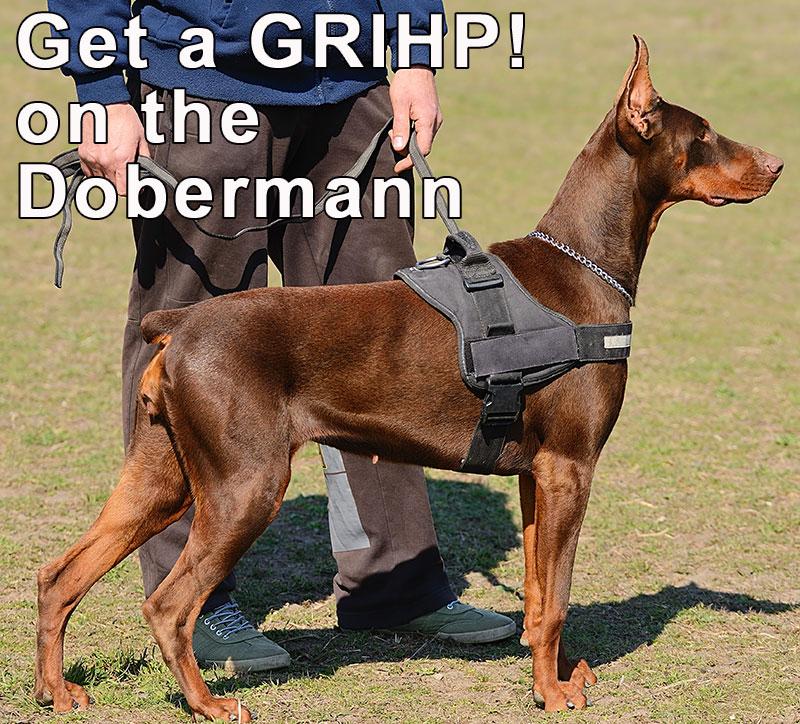


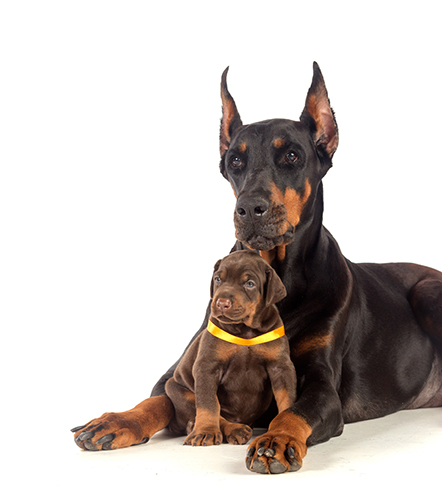 Key Health Conditions
Key Health Conditions

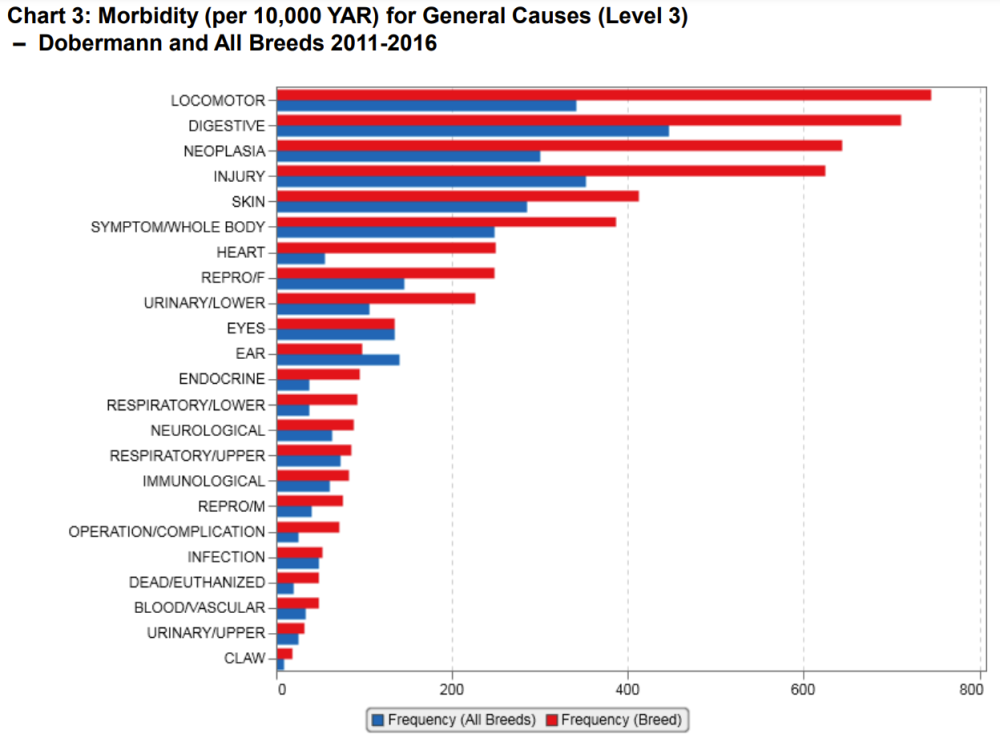
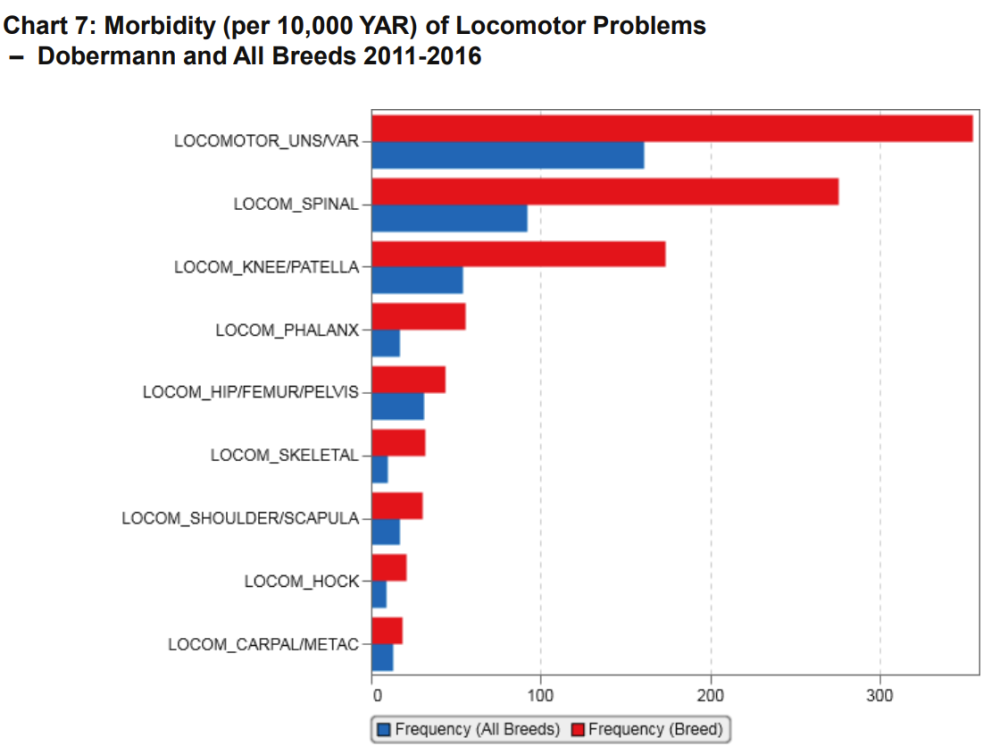
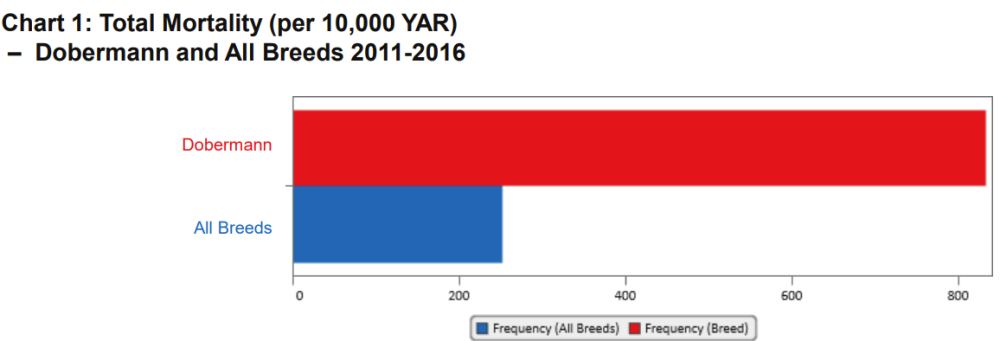

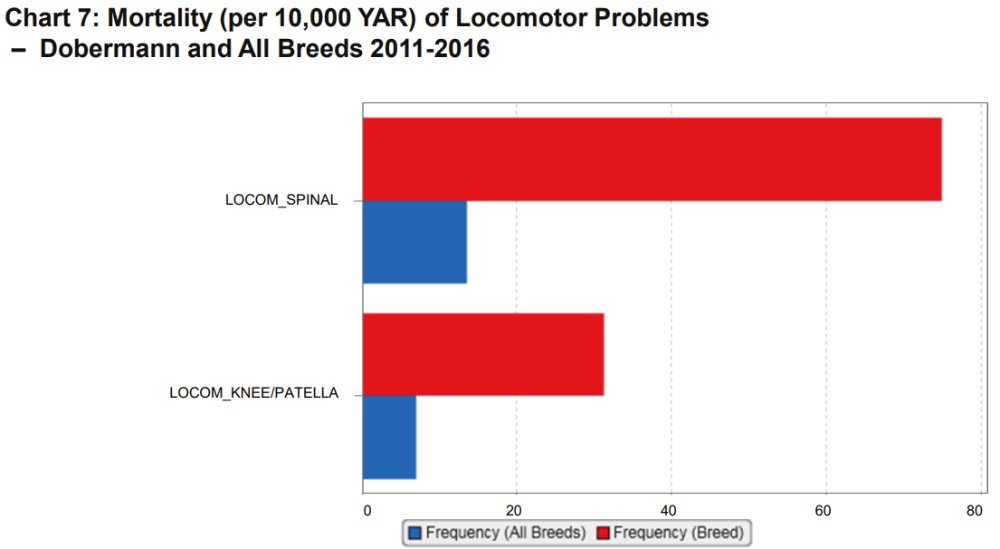
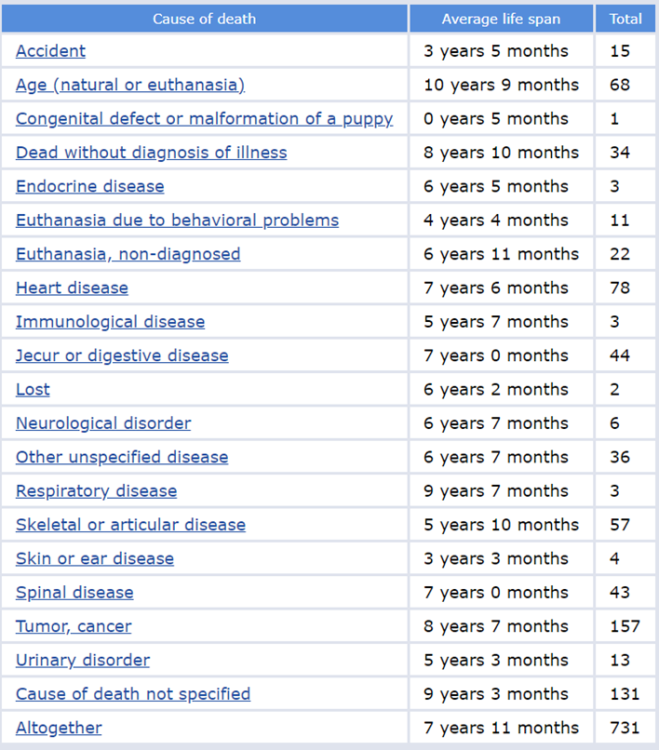
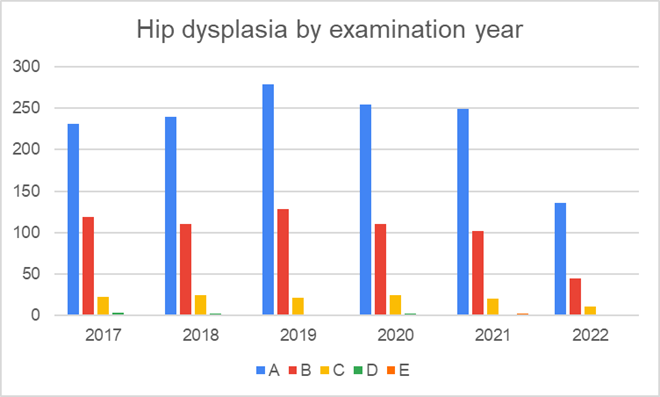
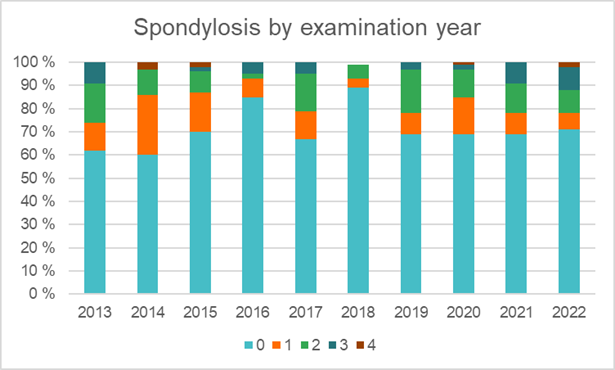

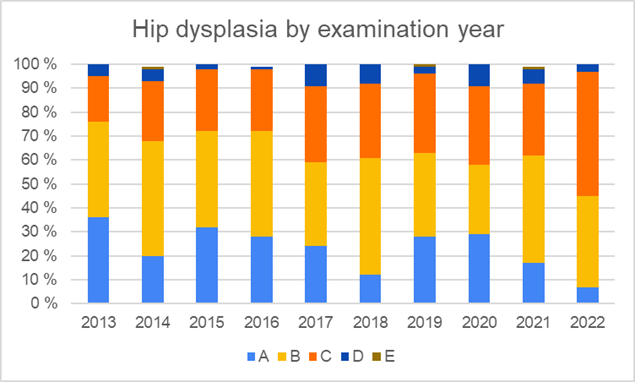
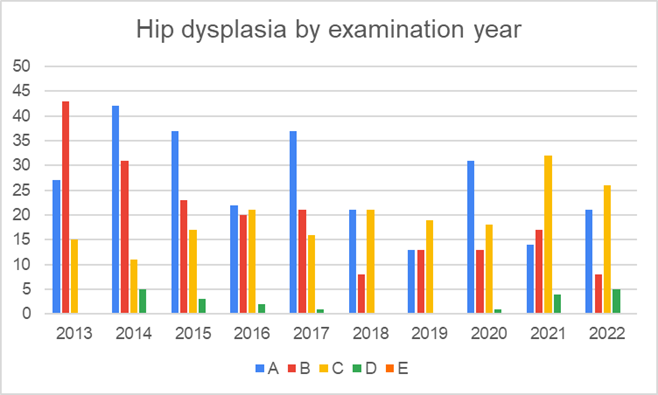
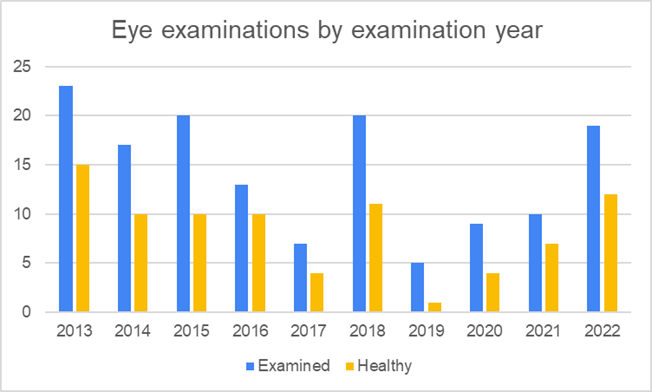
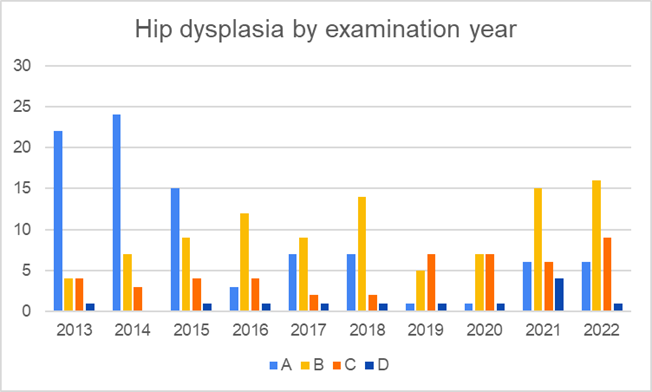
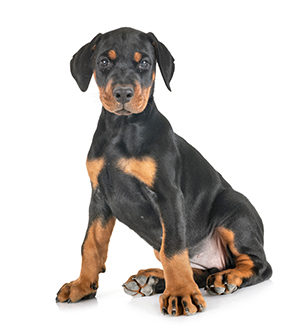


Recommended Comments
There are no comments to display.
Join the conversation
You can post now and register later. If you have an account, sign in now to post with your account.
Note: Your post will require moderator approval before it will be visible.